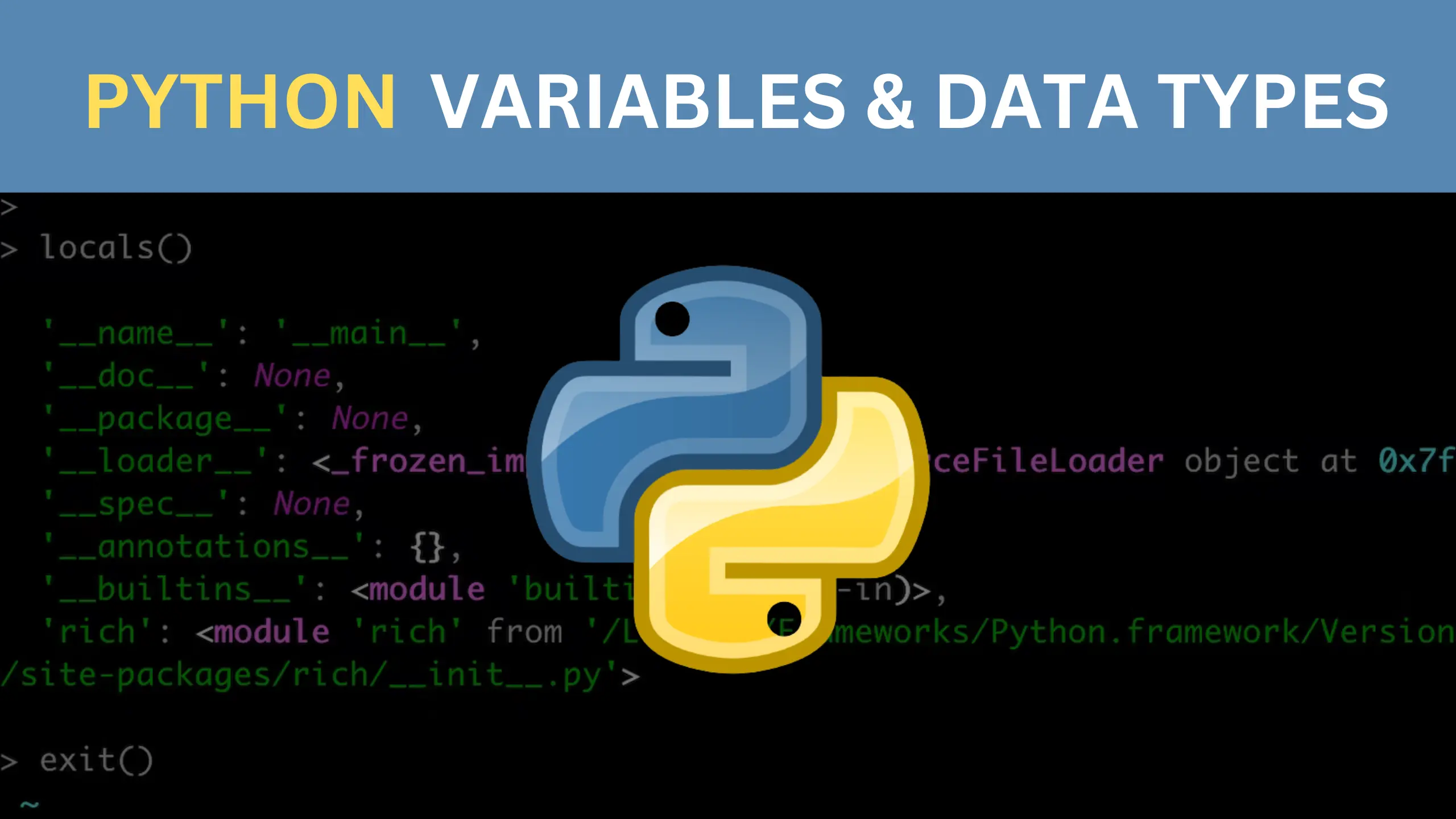Introduction
In the vast landscape of programming, Python stands as a colossus, renowned for its simplicity, versatility, and the ease with which it can handle a myriad of data types. To unlock the full potential of this language, it’s essential to have a deep understanding of Python variables and data types. In this comprehensive guide, we will delve into the intricacies of Python variables and data types, shedding light on their significance, usage, and nuances.
Video 📹
Understanding Python Variables
Variables are the building blocks of any programming language, and Python is no exception. In Python, a variable is a symbolic name given to an object or a value, allowing you to store and manipulate data efficiently. Let’s explore the key characteristics of Python variables:
Advertisement
1. Variable Declaration
In Python, you don’t need to explicitly declare the data type of a variable. Python is dynamically typed, meaning the interpreter automatically detects the data type based on the assigned value. This flexibility makes Python code concise and easy to read.
2. Variable Naming Conventions
Python variable names must follow certain conventions:
- They can only contain letters, numbers, or underscores.
- Variable names are case-sensitive.
- It’s advisable to use descriptive names to enhance code readability. For instance, use
user_ageinstead ofuato represent a user’s age.
3. Variable Assignment
To assign a value to a variable, you can use the = operator. For example:
pythonCopy code
user_age = 25
4. Variable Reassignment
Python allows you to change the value of a variable during the program’s execution, irrespective of its initial data type. This dynamic behavior is one of Python’s strengths.
Python Data Types
Python supports a plethora of data types, each serving specific purposes. Let’s explore the most commonly used data types in Python:
1. Integer (int)
Integers are whole numbers without a decimal point. They can be positive or negative. For instance:
pythonCopy code
x = 42 y = -10
2. Float
Floating-point numbers represent real numbers and have a decimal point. For example:
pythonCopy code
pi = 3.14
3. String (str)
Strings are sequences of characters enclosed in single (‘ ‘), double (” “), or triple (”’ or “””) quotes. They are used to represent text. For example:
pythonCopy code
name = "Alice"
4. Boolean (bool)
Booleans have two values: True and False. They are used in decision-making and conditional statements. For example:
pythonCopy code
is_student = True
5. List
Lists are ordered collections of items that can be of different data types. They are mutable, meaning you can modify their content. For example:
pythonCopy code
fruits = ["apple", "banana", "cherry"]
6. Tuple
Tuples are similar to lists but are immutable, meaning you cannot change their content after creation. They are defined using parentheses. For example:
pythonCopy code
coordinates = (3, 4)
7. Dictionary (dict)
Dictionaries are unordered collections of key-value pairs. They are used to store and retrieve data efficiently. For example:
pythonCopy code
person = {'name': 'John', 'age': 30}
8. Set
Sets are unordered collections of unique items. They are useful for performing mathematical set operations like union and intersection. For example:
pythonCopy code
colors = {'red', 'green', 'blue'}
Conclusion
Python variables and data types are the foundation of Python programming. Understanding these fundamental concepts is crucial for writing efficient and readable code. Python’s dynamic typing and extensive data type support make it a powerful and flexible language for a wide range of applications. By mastering Python variables and data types, you unlock the potential to create elegant and effective solutions in the world of programming.
Advertisement
